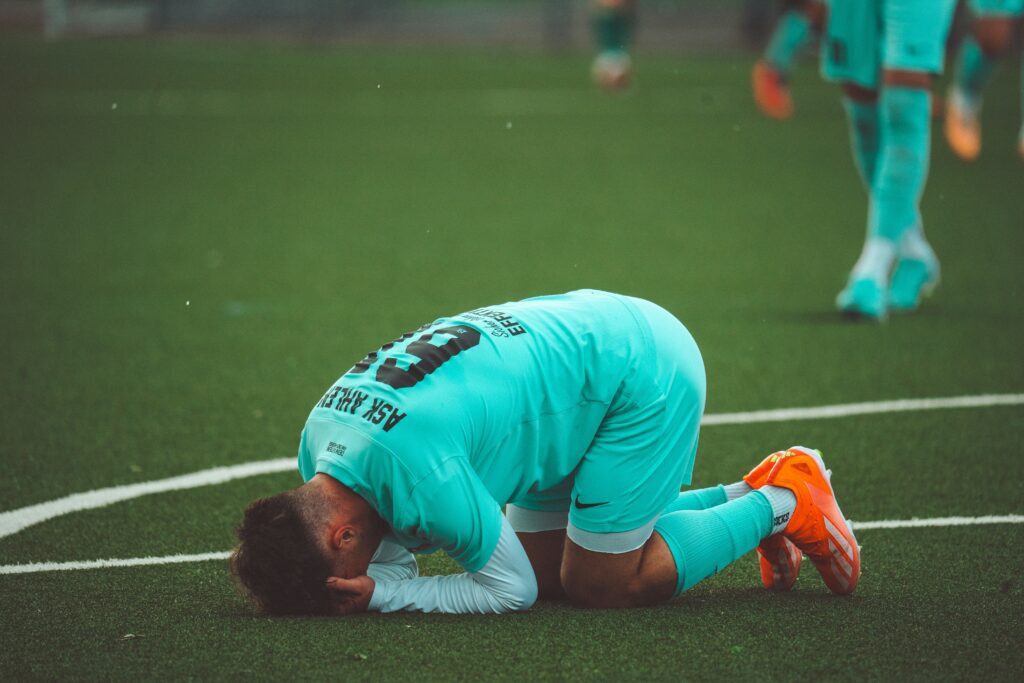As a passionate football player, I know how crucial it is to keep your gear in top condition for peak performance on the field. When it comes to football pads, wear and tear are inevitable, but with the right DIY tips for repairing and reinforcing them, you can extend their lifespan and stay protected during intense games. In this article, I’ll share some valuable insights on how you can easily fix minor damages, reinforce weak areas, and ensure your football pads are game-ready.
From torn padding to loose straps, addressing these issues promptly can make a significant difference in the durability and effectiveness of your football pads. By taking a proactive approach to maintenance and repair, you’ll not only save money on frequent replacements but also enhance your safety during gameplay. Stay tuned as I walk you through practical DIY tips that will help you tackle common pad problems like a pro.
Understanding the Importance of Football Pad Maintenance
Proper maintenance of football pads is crucial to ensure optimal performance and player safety on the field. As a player, I understand the significance of maintaining my gear to withstand the rigors of the game and protect myself from potential injuries.
Reasons to Regularly Repair and Reinforce
- Enhanced Durability: Regularly repairing and reinforcing football pads can significantly extend their lifespan, saving you money on frequent replacements.
- Improved Safety: By promptly addressing issues such as torn padding and loose straps, you enhance the overall safety of your equipment, reducing the risk of injuries during gameplay.
- Visual Inspection: Check your football pads regularly for any visible signs of wear such as tears, loose stitching, or deformation in padding.
- Physical Assessment: Feel the padding for any changes in density or thickness, which could indicate areas that need repair or reinforcement.
Essential Tools and Materials for DIY Pad Repair
When repairing football pads, having the right tools and materials is crucial to ensure a successful outcome. Here are some essential items you’ll need for a DIY pad repair project:
Adhesives and Sealants
To effectively repair torn padding or loose straps on football pads, you’ll need high-quality adhesives and sealants. Opt for strong, multipurpose adhesives that can bond different materials commonly found in football pads such as foam, fabric, and plastic. Silicone sealants can also be handy for sealing seams and edges to prevent further damage.
Padding and Replacement Kits
For more extensive repairs or replacing worn-out padding, having padding and replacement kits is essential. These kits typically include various types of padding materials like foam inserts, gel pads, or inflatable air cushions. Ensure the replacement pads match the size and shape of your football pads for a comfortable and secure fit. Be sure to follow the manufacturer’s instructions when replacing padding to maintain the integrity of the pads.
Step-by-Step Guide to Repairing Football Pads

Repairing football pads is crucial for maintaining their functionality and ensuring player safety. Below I outline a detailed guide to help you effectively repair and reinforce your football pads.
Assessing the Damage
To begin the repair process, inspect your football pads thoroughly for any damage. Check for torn padding, loose straps, or worn-out areas that need attention. Identifying the extent of the damage is essential to determine the necessary repair techniques and materials.
Preparing the Pads for Repair
Before starting the repair work, clean the pads to remove any dirt or debris that could affect the adhesion of the repair materials. Ensure that the surface is dry and free of any contaminants to allow for a strong bond. Gather all the tools and materials required for the repair, including adhesives, sealants, padding, and replacement kits.
Applying Repair Techniques
Once the pads are clean and dry, follow the manufacturer’s instructions for applying the repair techniques. Use the appropriate adhesive or sealant to mend torn padding and reinforce weak spots. Replace any worn-out padding with new material to restore the protective properties of the pads. Secure loose straps firmly to ensure a proper fit during games.
By following these steps and using the right tools and techniques, you can successfully repair and reinforce your football pads, extending their lifespan and keeping yourself safe on the field.
Enhancing Football Pads for Additional Protection
To maximize the durability and protection of football pads, employing reinforcing techniques is crucial.
Reinforcing Techniques for Increased Durability
When reinforcing football pads, one effective technique is to double-stitch areas prone to wear and tear, such as the seams and edges. Additionally, applying a layer of protective sealant can help prevent premature damage and enhance overall durability.
Best Materials for Reinforcement
For optimal reinforcement of football pads, consider using heavy-duty nylon threads for stitching and high-quality adhesive patches for sealing vulnerable areas. These materials provide excellent strength and resilience, ensuring long-lasting protection for the pads under intense game conditions.
Maintenance Tips to Extend the Life of Football Pads
To keep your football pads in top condition and ensure player safety, regular maintenance is key. By following these maintenance tips, you can extend the lifespan of your pads and address any issues that may arise promptly.
Routine Inspection and Cleaning
When it comes to maintaining your football pads, regular inspections and cleaning are essential. After each use, visually inspect your pads for any signs of wear and tear, such as torn padding or loose straps. Address these issues immediately to prevent further damage. Additionally, cleaning your pads regularly can help remove dirt and sweat buildup, keeping them fresh and odor-free.
Storage Tips for Off-Season
During the off-season, proper storage of your football pads is crucial to preserve their quality. Store your pads in a cool, dry place away from direct sunlight to prevent damage from heat exposure. Avoid storing them in damp or humid areas, as this can lead to mold and mildew growth. It’s also a good idea to place your pads in a breathable storage bag to allow air circulation and prevent unpleasant odors. By taking care of your pads during the off-season, you’ll ensure they’re ready for use when the next season rolls around.

About the author:
Danielo Fleischeronic is the visionary founder of Awesome Football Network, a premier destination for in-depth football coverage and analysis. His commitment to the sport is reflected in the platform’s rich content, which….

 Danielo Fleischeronic is the visionary founder of Awesome Football Network, a premier destination for in-depth football coverage and analysis. His commitment to the sport is reflected in the platform's rich content, which includes breaking news, match analyses, and expert commentary. Danielo’s extensive knowledge and passion for football drive the network’s mission to provide fans with the latest insights and updates from around the world.
In addition to his role as founder, Danielo is also an accomplished article writer. His writing covers a broad spectrum of football-related topics, from tactical breakdowns to player profiles, offering readers a comprehensive understanding of the game. Through his work, Danielo aims to enrich the football experience for enthusiasts and professionals, making Awesome Football Network a trusted resource in the football community.
Danielo Fleischeronic is the visionary founder of Awesome Football Network, a premier destination for in-depth football coverage and analysis. His commitment to the sport is reflected in the platform's rich content, which includes breaking news, match analyses, and expert commentary. Danielo’s extensive knowledge and passion for football drive the network’s mission to provide fans with the latest insights and updates from around the world.
In addition to his role as founder, Danielo is also an accomplished article writer. His writing covers a broad spectrum of football-related topics, from tactical breakdowns to player profiles, offering readers a comprehensive understanding of the game. Through his work, Danielo aims to enrich the football experience for enthusiasts and professionals, making Awesome Football Network a trusted resource in the football community.
